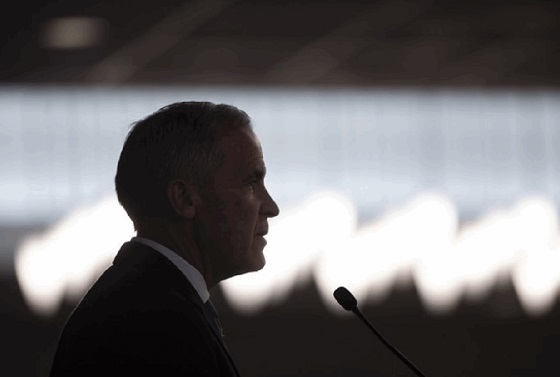Agriculture
Diesel won’t be easily replaced on the farm

From the Frontier Centre for Public Policy
By Brian Zinchuk, contributor to the Frontier Centre for Public Policy.
I was out at the cabin, trying to trim the reeds and weeds along the water, when I came across a stark reminder of how good we have it because of fossil fuels.
I was using the electric whipper snipper when the reel head decided to disassemble itself. But I still had a lot of weeds that needed to be cut.
So I went into the shed and dug out the old scythe Uncle Larry, the previous owner, put in there some time in the preceding 40 years. That scythe likely dates back to the 1930s, making it somewhere around 90 years old. A blacksmith hand-made that scythe.
I took a palm sander to it and put a usable edge on it.
My late grandfather, Harry Zinchuk, showed me how to use a scythe some 30 years ago, when I was around 18. I think he used one when he was 18, around 1935, twisting right to left. My technique was awful, my tool old and probably too dull. But I was able cut down about 40 square feet of reeds in a few sweat soaked minutes.
And with each stroke, I kept wondering how entire teams of men would go into the fields, slicing down crops entirely by hand. It would take days for them to do 160 acres.
It made me think of farming today. A few years ago I was hired to video and photograph a year on the farm for Jason and Sherrill LeBlanc of Estevan. They had their then 14-year-old daughter driving a mammoth Case combine, and doing so well. I wonder how much more productive one girl driving a combine was compared to teams of men with scythes, then stookers (a person who bends over and picks up the loose wheat that had been cut down), then threshing crews.
That same farm now continuously crops over 100 quarters (16,000 acres) of land, harvesting with a crew of around 20 people. They usually accomplish all of that in just a few weeks.
My grandfather worked on those threshing crews, from sun up to sun down. Lard sandwiches were his fuel. Hay fed the horses. How much more efficient are diesel combines now?
For some real-world explanations of this, I strongly encourage reading some of the books by Vaclav Smil, the University of Manitoba distinguished professor emeritus whose prolific writings on energy are a true wake-up call. Last summer I got through How the World Really Works: The Science Behind How We Got Here and Where We’re Going. Other titles of his I hope to get through are Energy and Civilization: A History, Invention and Innovation: A Brief History of Hype and Failure and Power Density: A Key to Understanding Energy Sources and Uses. The general thrust is how mankind’s mastery of energy supplies have allowed us to live the lives we currently enjoy.
Some people seem to think we can easily replace diesel with electric when it comes to farm equipment. One of those people is Canada’s Minister of Natural Resources Jonathan Wilkinson. I was present when he was in Kipling, Saskatchewan, on June 29, to announced $50 million for a wind power project. A local reporter asked him about electric tractors.
Focusing on cost of operations for farmers with regards to the Clean Fuel Regulations, the reporter noted, “That’s going to make life harder for them because, you know, the bottom line is there is no such thing in Saskatchewan right now as an [electric] tractor. You know, it’s just not feasible. And so, as they’re making this transition, what sort of investment is the federal government prepared to get to that?”
Wilkinson replied, “I think the first thing that you said about it’s just not feasible, people would have said exactly the same thing about an electric vehicle 10 years ago, and they would have said the same thing about an electric pickup truck. And now those are available to buy them. There are companies that are working on large scale equipment, including equipment for farming, that will be electric on a go-forward basis. So those kinds of solutions are actually driven by regulations like this. But what I would say is, and I do say, that this will create jobs and economic opportunity, including in the agricultural sector, because you use canola, and soy, and often agricultural residuals to make the products that are going to be driven by this whole thing. So, there are benefits associated with it.”
Electric tractors, eh? Just how large batteries will they require? Will they be the size of an air seeder tank, and pulled behind like a coal tender from locomotives of old? Do you need two, with someone towing one out to the field after charging, to allow continual operations?
Because that’s what farmers do these days. Jason’s seeding crew has their turnarounds to fuel, service, and refill the seeder with seed and fertilizer down to 18 minutes. They run shifts around the clock, many miles from home. And they have two mammoth Case 620 Quadtrac tractors doing so, plus an older tractor pulling a land roller, as well as two sprayers. Where and when are they supposed to charge up? How long will that take their equipment out of operation?
Are they just supposed to find the nearest power pole and hook up some big booster cables?
Farming requires enormous amounts of energy – a lot more than a lard sandwich or EV charger. And diesel is the answer, and will be for a long time to come. Sorry, Mr. Minister. Electric tractors won’t be cutting it anytime soon.
Brian Zinchuk is editor and owner of Pipeline Online, and occasional contributor to the Frontier Centre for Public Policy. He can be reached at [email protected].
Agriculture
The Climate Argument Against Livestock Doesn’t Add Up

From the Frontier Centre for Public Policy
Livestock contribute far less to emissions than activists claim, and eliminating them would weaken nutrition, resilience and food security
The war on livestock pushed by Net Zero ideologues is not environmental science; it’s a dangerous, misguided campaign that threatens global food security.
The priests of Net Zero 2050 have declared war on the cow, the pig and the chicken. From glass towers in London, Brussels and Ottawa, they argue that cutting animal protein, shrinking herds and pushing people toward lentils and lab-grown alternatives will save the climate from a steer’s burp.
This is not science. It is an urban belief that billions of people can be pushed toward a diet promoted by some policymakers who have never worked a field or heard a rooster at dawn. Eliminating or sharply reducing livestock would destabilize food systems and increase global hunger. In Canada, livestock account for about three per cent of total greenhouse gas emissions, according to Environment and Climate Change Canada.
Activists speak as if livestock suddenly appeared in the last century, belching fossil carbon into the air. In reality, the relationship between humans and the animals we raise is older than agriculture. It is part of how our species developed.
Two million years ago, early humans ate meat and marrow, mastered fire and developed larger brains. The expensive-tissue hypothesis, a theory that explains how early humans traded gut size for brain growth, is not ideology; it is basic anthropology. Animal fat and protein helped build the human brain and the societies that followed.
Domestication deepened that relationship. When humans raised cattle, sheep, pigs and chickens, we created a long partnership that shaped both species. Wolves became dogs. Aurochs, the wild ancestors of modern cattle, became domesticated animals. Junglefowl became chickens that could lay eggs reliably. These animals lived with us because it increased their chances of survival.
In return, they received protection, veterinary care and steady food during drought and winter. More than 70,000 Canadian farms raise cattle, hogs, poultry or sheep, supporting hundreds of thousands of jobs across the supply chain.
Livestock also protected people from climate extremes. When crops failed, grasslands still produced forage, and herds converted that into food. During the Little Ice Age, millions in Europe starved because grain crops collapsed. Pastoral communities, which lived from herding livestock rather than crops, survived because their herds could still graze. Removing livestock would offer little climate benefit, yet it would eliminate one of humanity’s most reliable protections against environmental shocks.
Today, a Maasai child in Kenya or northern Tanzania drinking milk from a cow grazing on dry land has a steadier food source than a vegan in a Berlin apartment relying on global shipping. Modern genetics and nutrition have pushed this relationship further. For the first time, the poorest billion people have access to complete protein and key nutrients such as iron, zinc, B12 and retinol, a form of vitamin A, that plants cannot supply without industrial processing or fortification. Canada also imports significant volumes of soy-based and other plant-protein products, making many urban vegan diets more dependent on long-distance supply chains than people assume. The war on livestock is not a war on carbon; it is a war on the most successful anti-poverty tool ever created.
And what about the animals? Remove humans tomorrow and most commercial chickens would die of exposure, merino sheep would overheat under their own wool and dairy cattle would suffer from untreated mastitis (a bacterial infection of the udder). These species are fully domesticated. Without us, they would disappear.
Net Zero 2050 is a climate target adopted by federal and provincial governments, but debates continue over whether it requires reducing livestock herds or simply improving farm practices. Net Zero advocates look at a pasture and see methane. Farmers see land producing food from nothing more than sunlight, rain and grass.
So the question is not technical. It is about how we see ourselves. Does the Net Zero vision treat humans as part of the natural world, or as a threat that must be contained by forcing diets and erasing long-standing food systems? Eliminating livestock sends the message that human presence itself is an environmental problem, not a participant in a functioning ecosystem.
The cow is not the enemy of the planet. Pasture is not a problem to fix. It is a solution our ancestors discovered long before anyone used the word “sustainable.” We abandon it at our peril and at theirs.
Dr. Joseph Fournier is a senior fellow at the Frontier Centre for Public Policy. An accomplished scientist and former energy executive, he holds graduate training in chemical physics and has written more than 100 articles on energy, environment and climate science.
Agriculture
Why is Canada paying for dairy ‘losses’ during a boom?

This article supplied by Troy Media.
Canadians are told dairy farmers need protection. The newest numbers tell a different story
Every once in a while, someone inside a tightly protected system decides to say the quiet part out loud. That is what Joel Fox, a dairy farmer from the Trenton, Ont., area, did recently in the Ontario Farmer newspaper.
In a candid open letter, Fox questioned why established dairy farmers like himself continue to receive increasingly large government payouts, even though the sector is not shrinking but expanding. For readers less familiar with the system, supply management is the federal framework that controls dairy production through quotas and sets minimum prices to stabilize farmer income.
His piece, titled “We continue to privatize gains, socialize losses,” did not come from an economist or a critic of supply management. It came from someone who benefits from it. Yet his message was unmistakable: the numbers no longer add up.
Fox’s letter marks something we have not seen in years, a rare moment of internal dissent from a system that usually speaks with one voice. It is the first meaningful crack since the viral milk-dumping video by Ontario dairy farmer Jerry Huigen, who filmed himself being forced to dump thousands of litres of perfectly good milk because of quota rules. Huigen’s video exposed contradictions inside supply management, but the system quickly closed ranks until now. Fox has reopened a conversation that has been dormant for far too long.
In his letter, Fox admitted he would cash his latest $14,000 Dairy Direct Payment Program cheque, despite believing the program wastes taxpayer money. The Dairy Direct Payment Program was created to offset supposed losses from trade agreements like the Comprehensive Economic and Trade Agreement (CETA), the Comprehensive and Progressive Agreement for Trans-Pacific Partnership (CPTPP) and the Canada–United States–Mexico Agreement (CUSMA).
During those negotiations, Ottawa promised compensation because the agreements opened a small share of Canada’s dairy market, roughly three to five per cent, to additional foreign imports. The expectation was that this would shrink the domestic market. But those “losses” were only projections based on modelling and assumptions about future erosion in market share. They were predictions, not actual declines in production or demand. In reality, domestic dairy demand has strengthened.
Which raises the obvious question: why are we compensating dairy farmers for producing less when they are, in fact, producing more?
This month, dairy farmers received another one per cent quota increase, on top of several increases totalling four to five per cent in recent years. Quota only goes up when more milk is needed.
If trade deals had actually harmed the sector, quota would be going down, not up. Instead, Canada’s population has grown by nearly six million since 2015, processors have expanded and consumption has held steady. The market is clearly expanding.
Understanding what quota is makes the contradiction clearer. Quota is a government-created financial asset worth $24,000 to $27,000 per kilogram of butterfat. A mid-sized dairy farm may hold about $2.5 million in quota. Over the past few years, cumulative quota increases of five per cent or more have automatically added $120,000 to $135,000 to the value of a typical farm’s quota, entirely free.
Larger farms see even greater windfalls. Across the entire dairy system, these increases represent hundreds of millions of dollars in newly created quota value, likely exceeding $500 million in added wealth, generated not through innovation or productivity but by a regulatory decision.
That wealth is not just theoretical. Farm Credit Canada, a federal Crown corporation, accepts quota as collateral. When quota increases, so does a farmer’s borrowing power. Taxpayers indirectly backstop the loans tied to this government-manufactured asset. The upside flows privately; the risk sits with the public.
Yet despite rising production, rising quota values, rising equity and rising borrowing capacity, Ottawa continues issuing billions in compensation. Between 2019 and 2028, nearly $3 billion will flow to dairy farmers through the Dairy Direct Payment Program. Payments are based on quota holdings, meaning the largest farms receive the largest cheques. New farmers, young farmers and those without quota receive nothing. Established farms collect compensation while their asset values grow.
The rationale for these payments has collapsed. The domestic market did not shrink. Quota did not contract. Production did not fall. The compensation continues only because political promises are easier to maintain than to revisit.
What makes Fox’s letter important is that it comes from someone who gains from the system. When insiders publicly admit the compensation makes no economic sense, policymakers can no longer hide behind familiar scripts. Fox ends his letter with blunt honesty: “These privatized gains and socialized losses may not be good for Canadian taxpayers … but they sure are good for me.”
Canada is not being asked to abandon its dairy sector. It is being asked to face reality. If farmers are producing more, taxpayers should not be compensating them for imaginary declines. If quota values keep rising, Ottawa should not be writing billion-dollar cheques for hypothetical losses.
Fox’s letter is not a complaint; it is an opportunity. If insiders are calling for honesty, policymakers should finally be willing to do the same.
Dr. Sylvain Charlebois is a Canadian professor and researcher in food distribution and policy. He is senior director of the Agri-Food Analytics Lab at Dalhousie University and co-host of The Food Professor Podcast. He is frequently cited in the media for his insights on food prices, agricultural trends, and the global food supply chain.
Troy Media empowers Canadian community news outlets by providing independent, insightful analysis and commentary. Our mission is to support local media in helping Canadians stay informed and engaged by delivering reliable content that strengthens community connections and deepens understanding across the country.
-

 International1 day ago
International1 day agoOttawa is still dodging the China interference threat
-

 Business22 hours ago
Business22 hours agoThere’s No Bias at CBC News, You Say? Well, OK…
-

 Automotive21 hours ago
Automotive21 hours agoCanada’s EV gamble is starting to backfire
-

 International23 hours ago
International23 hours ago2025: The Year The Narrative Changed
-

 Fraser Institute2 days ago
Fraser Institute2 days agoCarney government sowing seeds for corruption in Ottawa
-

 Daily Caller2 days ago
Daily Caller2 days agoWhile Western Nations Cling to Energy Transition, Pragmatic Nations Produce Energy and Wealth
-

 Business1 day ago
Business1 day agoResidents in economically free states reap the rewards
-

 Alberta1 day ago
Alberta1 day agoAlberta project would be “the biggest carbon capture and storage project in the world”






